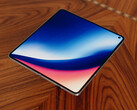The Apple iPhone 16e launched yesterday, February 20 is designed to replace the previous iPhone SE 3. Dropping the "SE" prefix, the Cupertino-based company has blessed the new model with a powerful A18 chip, making it even more appealing to its audience. According to the official announcement, however, the new budget-friendly iPhone features a binned version of the A18 SoC, which includes a 4-core GPU—one core less than what's found in the standard iPhone 16’s A18 SoC. Will that still be sufficient for Apple fans to enjoy games and demanding applications?
Now, using simpler and less performant versions of full-fat chips is not something new. Even with the current and most advanced processes, it’s almost impossible to achieve a perfect chip production yield. Most manufacturers are using this approach to make the most out of every wafer produced, and Apple isn’t an exception here.
In the case of the iPhone 16e, only the GPU part of the installed SoC differs from the full-blown A18, used in the iPhone 16. That means that the users will still have access to 2 big and 4 small CPU cores, as well as a 16-core Neural Engine (35 TOPS), so the performance in everyday tasks should be virtually the same as on the standard model.
Apple last used a cut-down version of its mobile SoC in the iPad mini (2024), which also had one GPU core less compared to the standard A17 Pro. If our 7th-Gen iPad mini tests are anything to go by, then the performance deficit of the cut-down A18 might not be as significant as one might think. As you can see in the 3DMark Wild Life/Solar Bay Stress test graph below, the A17 Pro with one GPU core less delivers almost the same or occasionally even better performance than the standard A17 Pro (found in the iPhone 15 Pro Max):
Granted, the impressive results of the cut-down A17 Pro can be attributed to the better heat dissipation of the bigger (compared to an iPhone) metal case. However, to some extent, the absence of one core can bring more efficiency to the table: lower power consumption also allows for a better temperature headroom. What that means is, with the right tuning and optimizations Apple might actually reduce the gap between the new iPhone 16e and standard models in performance, possibly making the chips almost indistinguishable in most scenarios. Battery life may get a boost as well, which actually is indirectly confirmed by the official runtime figures: up to 26h vs up to 22h for the standard iPhone 16 (can also be a result of a bigger battery, though).
With all that said, you should take everything of the above with a grain of salt since we can only speculate about possible performance results until the actual review sample arrives at our test laboratory.
Source(s)
Apple, Notebookcheck reviews
















